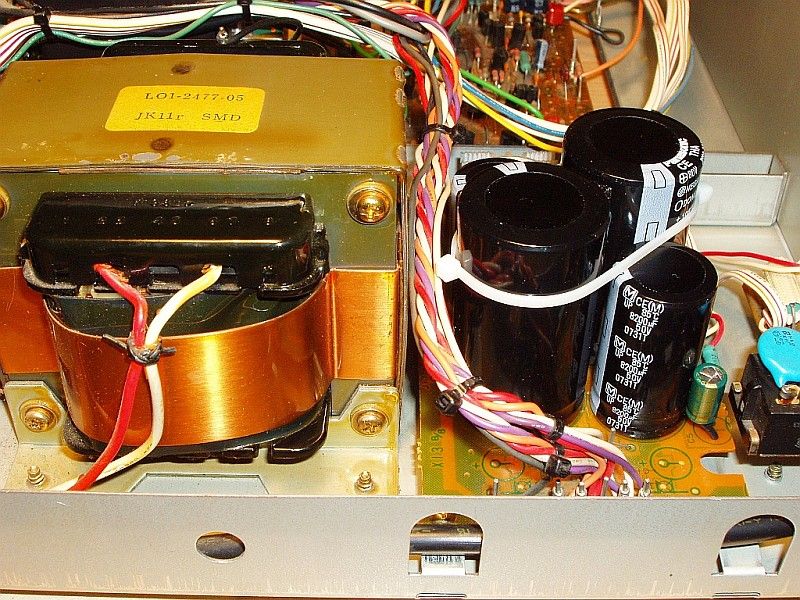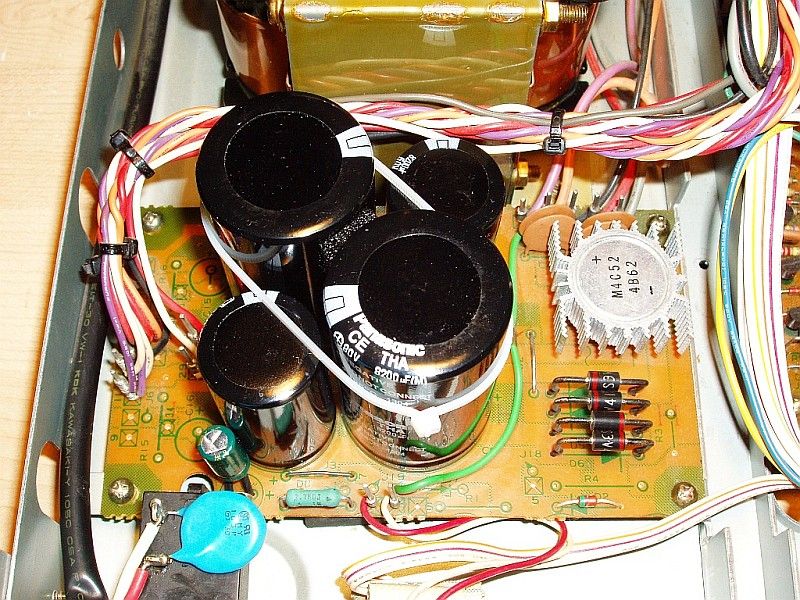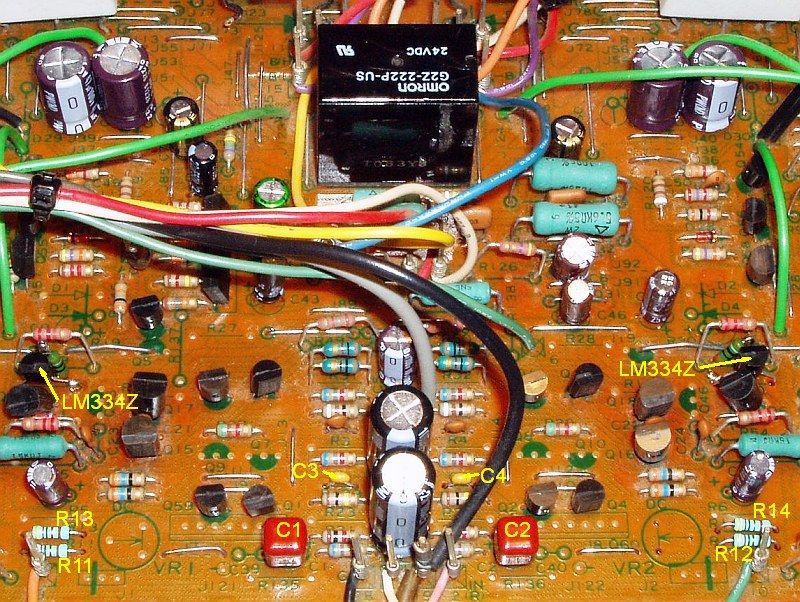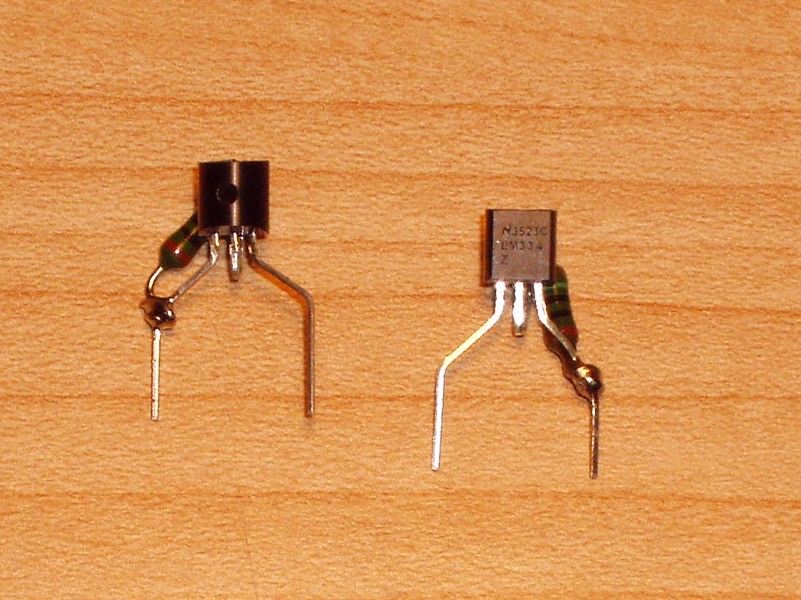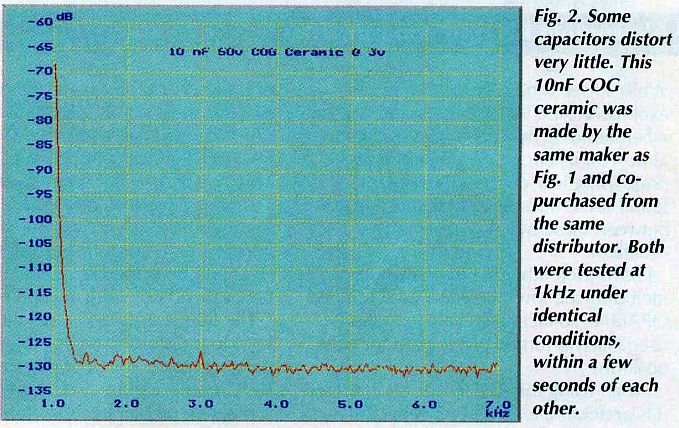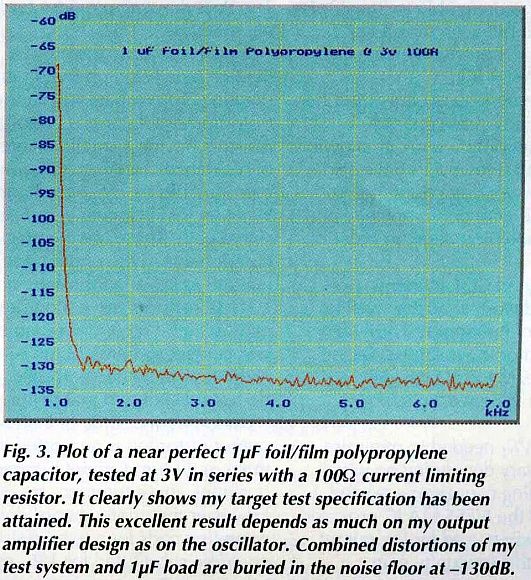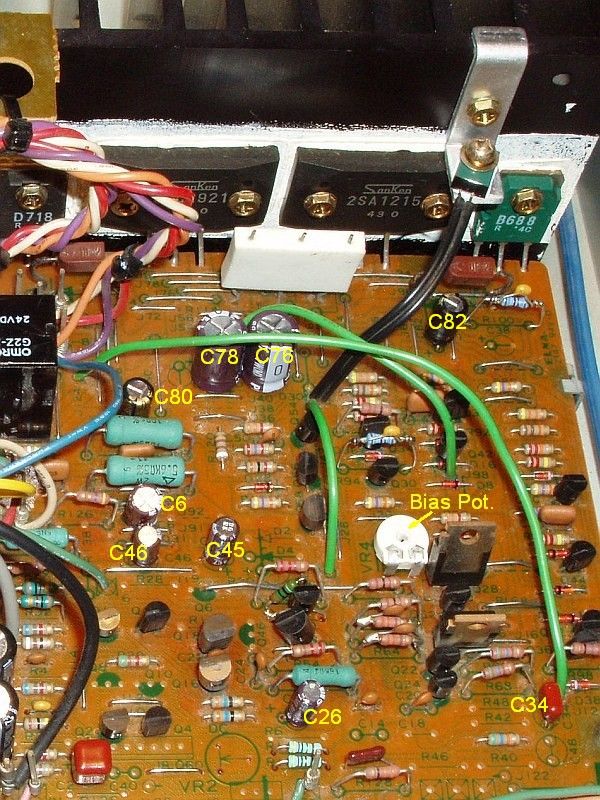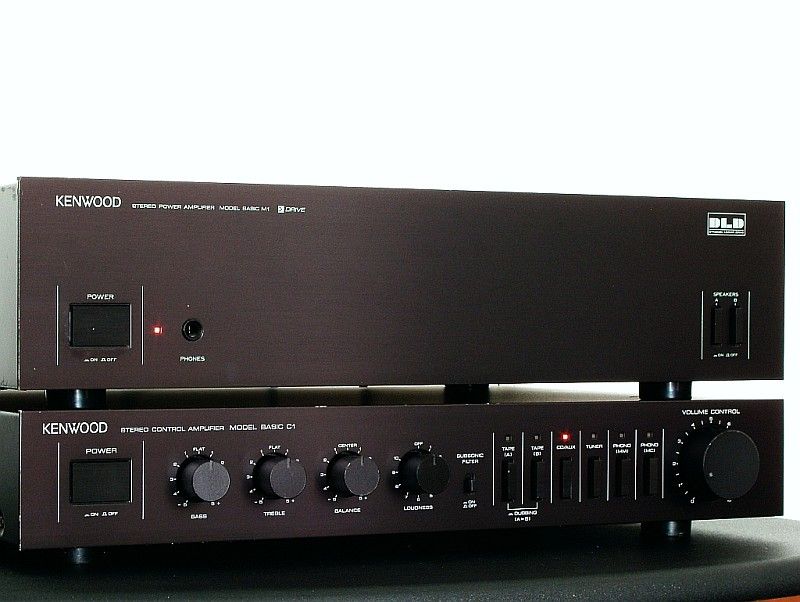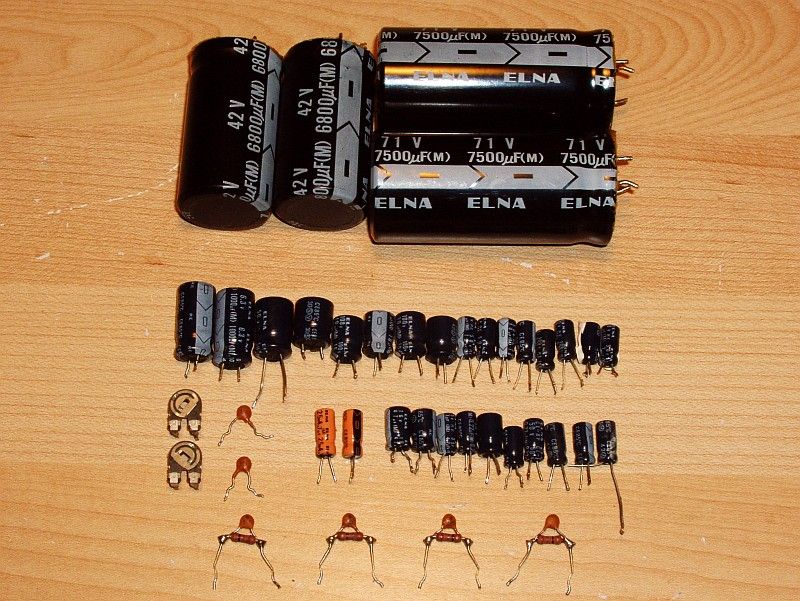Leestereo
Super Member
AK member Unican Eric brought in this Kenwood M1 for a complete restoration and upgrade. The M1 is a well regarded 105 wpc power amplifier from Kenwood's Basic series and definitely merits a restoration/upgrade. The restoration/upgrade plan for this Kenwood M1 consists of the following:
1. Replace all of the power supply electrolytic capacitors with higher spec. 105°C low ESR types (increasing capacity where appropriate and possible).
2. Implementation of the DRM Audio Kits' current source modification.
3. Installation of emitter degeneration resistors for the input differential pair.
4. Replace the signal path capacitors, with either film types or C0G/NPO types, as appropriate.
Here are some pictures of the Kenwood Basic M1 power amplifier as first received:
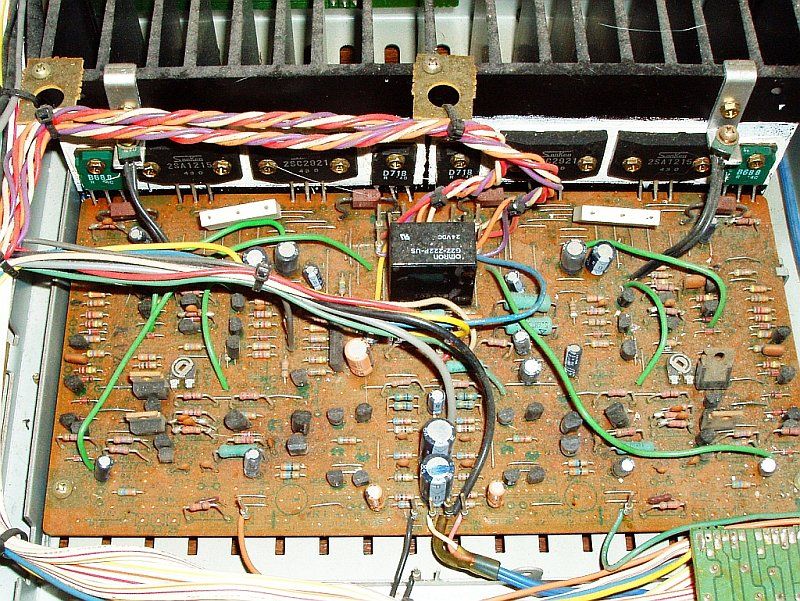
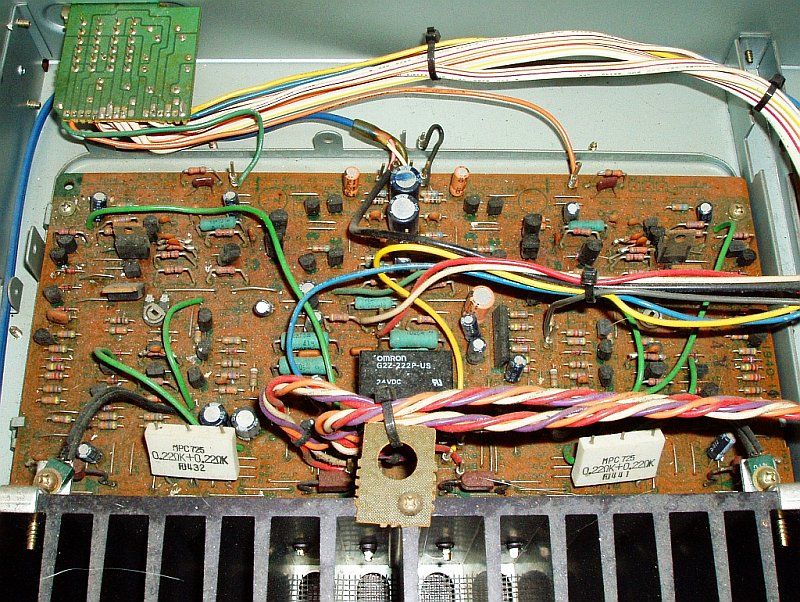
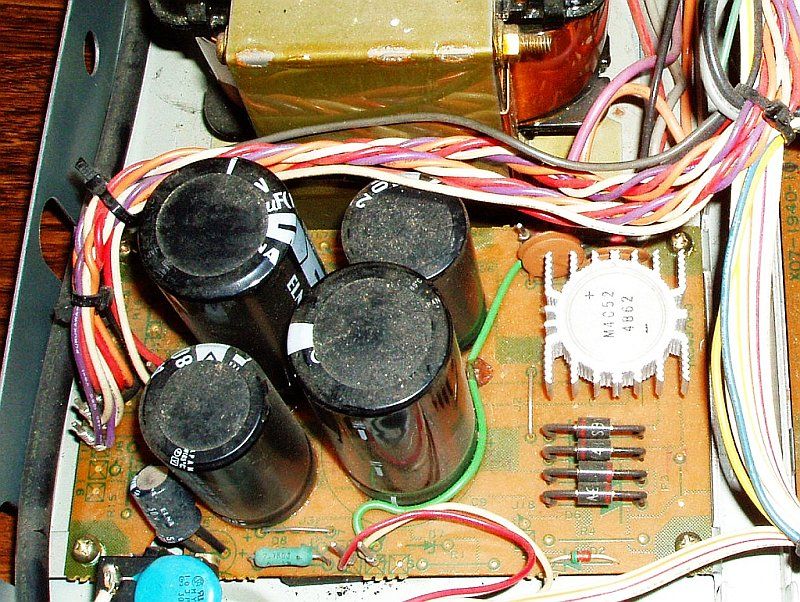
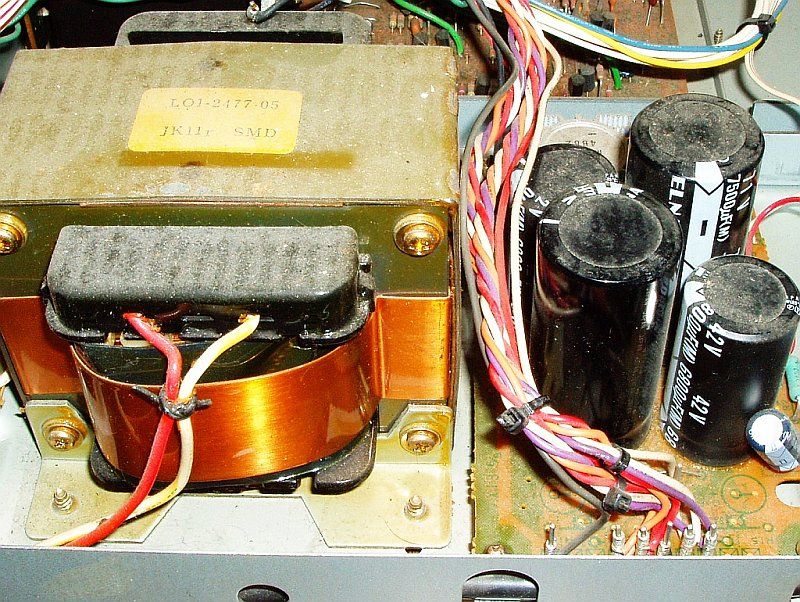
1. Replace all of the power supply electrolytic capacitors with higher spec. 105°C low ESR types (increasing capacity where appropriate and possible).
2. Implementation of the DRM Audio Kits' current source modification.
3. Installation of emitter degeneration resistors for the input differential pair.
4. Replace the signal path capacitors, with either film types or C0G/NPO types, as appropriate.
Here are some pictures of the Kenwood Basic M1 power amplifier as first received:




Last edited:


